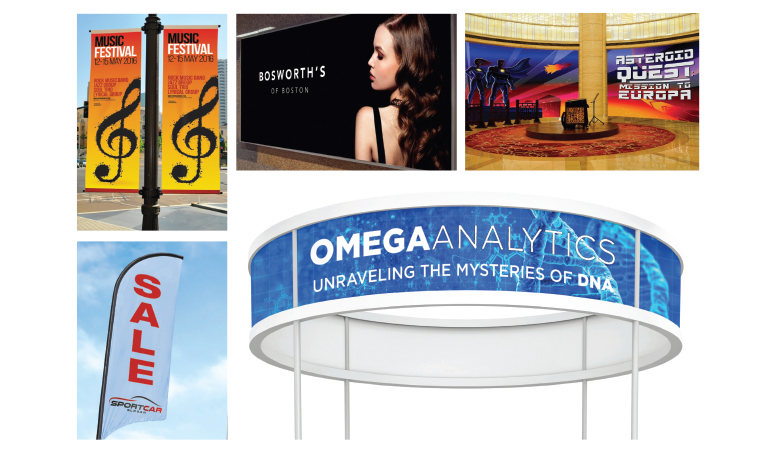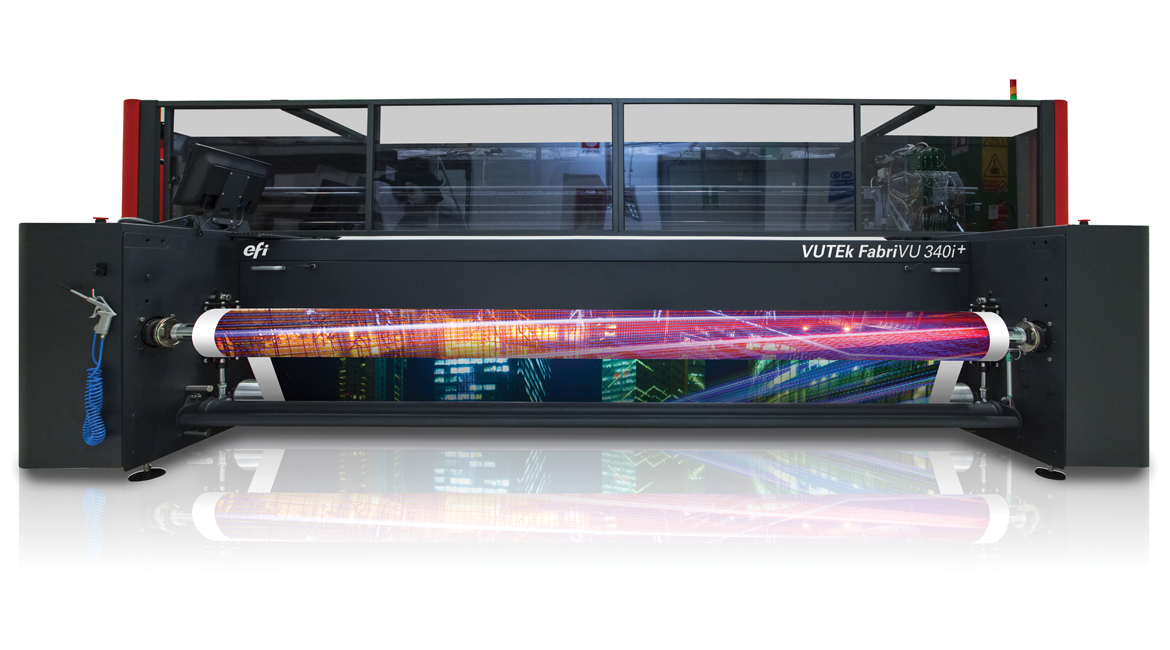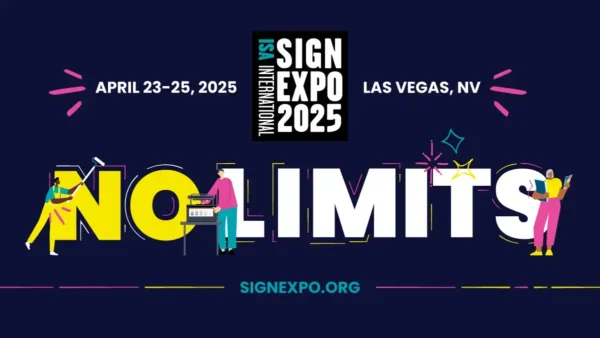Sponsored by GreatAmerica Financial Services
EFI’s Steve Victor discusses the keys to success.
Above: EFI VUTEk FabriVU 340i+ designed to produce soft signage and other textile applications.
As the office copier and commercial printing markets continue to show slow or no growth, dealers are looking for diversification opportunities to compensate for the shortfall. The soft signage segment of the signs and display graphics market offers an exciting one.
As we migrate from pandemic to endemic status for COVID-19 and businesses are trying to get back to a somewhat normal state, the demand for signs and display graphics continues to grow. A prominent growth segment is hospitality and events—especially because large, in-person gatherings were shut down for at least two years and are now rebounding.
In addition, as companies increasingly ask employees to return to the office, whether full-time or part-time, they are also refreshing office décor. And for those working at home, they continue personalizing their office space, including updates in décor. Soft signage (signage produced on fabric) is popular for all these applications, especially events. Statistica reports that the global trade show market will fully recover in 2023, surpassing its pre-pandemic performance.

Examples of soft signage output.
Then, there is also new construction to consider as a growth factor for experiential graphics and other wide-format applications. According to the American Institute of Architects (AIA), construction spending on buildings is projected to increase just over 9% this year [2022] and another 6% in 2023. AIA also reports that despite economic and supply-chain challenges, construction spending picked up through the first half of 2022, particularly for retail and manufacturing facilities.
All of this is driving demand in the signs and display-graphics segment. The question is how to take advantage of this growth opportunity for office technology dealers. We spoke with Steve Victor, EFI’s director of field services, Americas, to find out how the company supports its dealers in this type of transition.
TCR: Steve, can you outline how EFI works with dealers in terms of onboarding them to represent the company in wide format?
Victor: First, enabling dealer success with EFI products has been a core part of our business since our founding. We have also incorporated dealer support programs into this segment. The first part of the onboarding equation involves sales before it gets to service. The EFI channel team works with the dealer to ensure a mutual success path to sell and service EFI products in their market. Once a business plan is agreed upon, the EFI channel team works with field service and the dealer to develop a service and support strategy, including the appropriate training and support requirements.
TCR: What criteria are used to qualify a dealer?
Victor: The number one criterion is ensuring we can succeed together. We have worked with many dealers over the years and have found that success is always a joint effort. EFI has a history of bringing innovative technology to the market. And we know many dealers have a strong customer base and market outreach. That said, several criteria make a dealer stand out, including their penetration within a given geographic area, customers serviced in the past, and if they have a strategic opportunity with their current account relationships. For example, maybe that customer is outsourcing its sign and display graphics business and would like to bring it in-house. For the dealer, it’s not just the equipment sales. It’s also the ongoing revenue opportunity offered by consumables (ink and parts), and professional and technical services. We also look at what kind of infrastructure they have in place. Do they have technicians today, and if so, what is their skill set? How many technicians, and where are they located geographically?
TCR: For many of these dealers, their experience is in sheetfed, and with soft signage, we are talking about dye-sublimation printers. What kind of transition challenges does that present?
Victor: There is a learning curve, but we have training programs to address those. We train dealers in both the equipment operation and in break/fix repair of the equipment. It is ideal if they have the equipment in their demo center, but we can also provide training in our Londonderry, New Hampshire center. We then support them in the first installation, going onsite with them. From that point forward, they take ownership, and we provide second-level support as needed.
TCR: Is this a one-and-done thing?
Victor: No. Once we have trained them, we certify them as a reseller of the particular equipment. We monitor whether they have completed the required training, and then, they must recertify every two years. The intent is that they stay current on the product or products. Typically, these changes are more software than hardware. Another consideration is the use of our Fiery RIP and the ability to optimize it as a critical element of the total solution. We also conduct frequent conference calls with them to ensure they understand where to find online resources, how to order parts, how to contact us, and whom to contact for various support issues, as well as the resolution of any problems, which is core to our reseller support. The frequency of the calls is largely determined by how many printers they sell. The higher the sales volume, the more frequent the calls are likely.
TCR: What about inkjet and dye-sublimation knowledge?
Victor: In our experience, most of these dealers have dealt with inkjet products, albeit lower-end office-type products in some instances. Most have at least a base level of knowledge of inkjet printing. Dealers may have experience printing on fabric with smaller inkjet machines, direct to garment, direct to fabric, or dye sublimation. In those cases, they would be looking to add higher-volume equipment to their offering. But they will likely be more familiar with the various textile inks and associated color management, etc., than the typical office product dealer.
TCR: How else can dealers get started if they currently are not positioned to immediately offer soft signage printers?
Victor: We have a referral program. So, if a current dealer comes across a soft signage printer opportunity, we can work with them on a referral basis. That’s one way to ease into the market. Then, based on that experience, they can determine if they want to pursue a discussion with sales regarding becoming a dealer/partner for our soft signage product line.
TCR: Anything else you would like to add?
Victor: We work with dealers closely because the more educated they are, the more successful they will be. That translates to more equipment and consumable sales. Also, the more they know about the equipment and the market, the better equipped they will be to educate their customers on getting the most out of their equipment investment. We want it to be a true partnership and enable the dealer to
_________________________
To become a subscriber, visit www.thecannatareport.com/register or contact cjcannata@cannatareport.com directly. Bulk subscription rates are also available upon request and included in our media kit.




